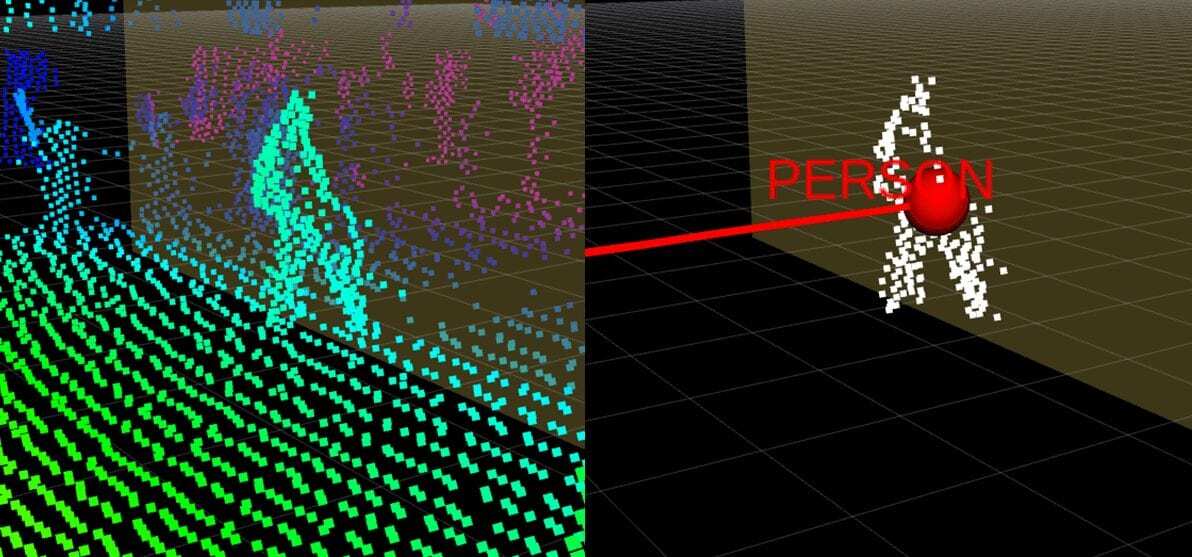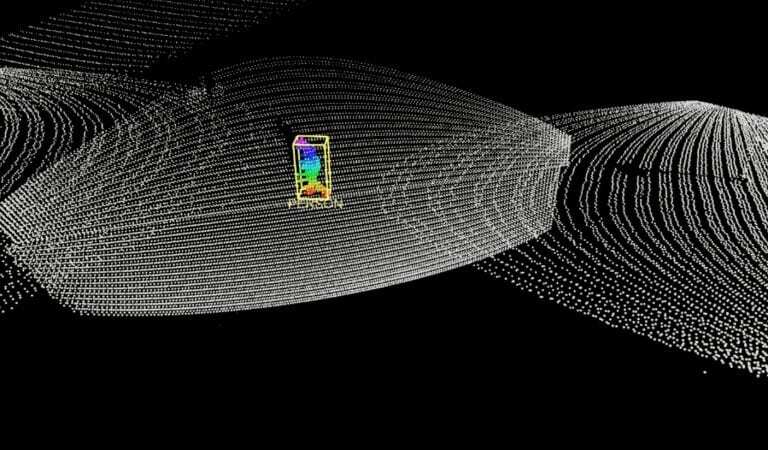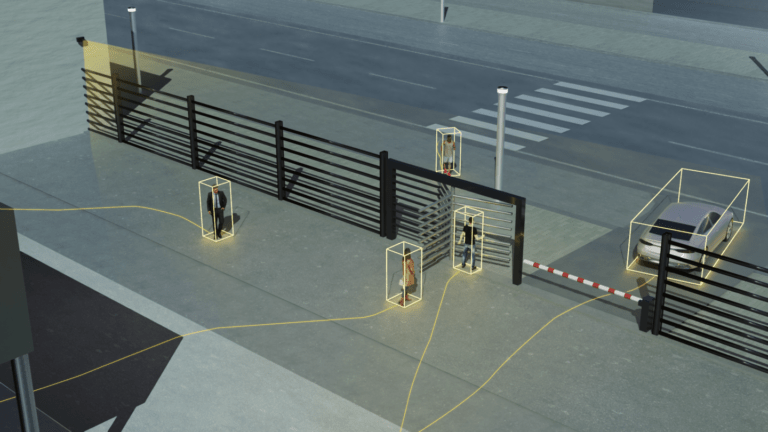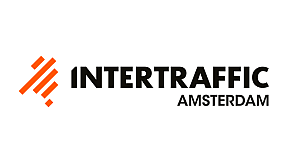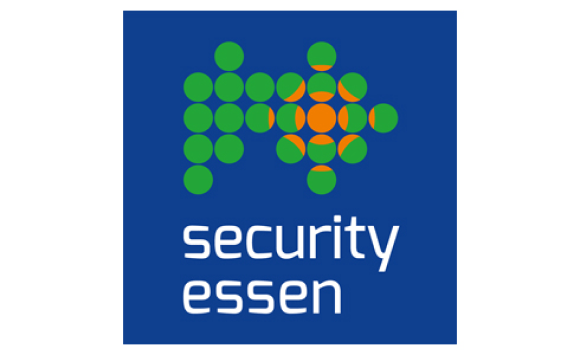Updated August 2025
The developments in LiDAR technology have opened up a whole new world of use cases. With the ability to collect anonymized distance information as point clouds with centimeter-level accuracy, LiDAR offers exciting possibilities for real-time monitoring and analysis. Typically, LiDAR sensors capture their environment and output the point clouds of the entire scene before any data processing. While extremely useful, these unprocessed point clouds create a significant challenge: transferring, storing, and analyzing such large volumes of data can be demanding, particularly for LiDAR data transmission over 5G and other wireless networks.
On-device Motion Detection
Blickfeld tackles this problem with an on-device preprocessing algorithm that enables motion detection applications for the Blickfeld LiDAR. This is achieved through the subtraction of the static background on the device itself using the high-performance system-on-chip (SoC) integrated within the LiDAR. The feature allows the extraction of insightful information, specifically dynamic motion detection, early in the processing pipeline and generation of pre-processed point cloud data ready to be analyzed and used in the respective applications.
Although it depends on the amount of activity in the scene, generally the algorithm leads to a dramatic reduction in the amount of data to be transmitted, especially when the scene is mostly static. As in the example, >98% lesser data has to be transmitted, as the total number of data points is reduced from 8800+ to merely ~163, which has a linear reduction in memory and transmission time — critical for wireless LiDAR applications over LTE or 5G networks.
This enhances LiDAR sensors’ ability to operate in applications involving recording, tracking, and analysis of moving objects in a wide variety of environments. Applications that benefit immensely from the feature include intelligent visual surveillance and tracking systems for traffic and public places such as roads, train stations, and airports, as well as many security use cases.
Working Principle
Blickfeld LiDAR identifies moving objects by comparing each new point cloud to a reference model of the scene, separating static points (background) from dynamic points (foreground). Only the moving points are processed further, which reduces data volumes and focuses on the relevant part of the scene.
There are two main modes:
- Static motion detection: For fixed indoor environments. The scene is captured once, and any change is reported as a moving object.
- Dynamic motion detection: For outdoor or changing environments. The scene model adapts over time while still highlighting moving objects.
This approach makes real-time applications like people counting or traffic monitoring more efficient, especially when using LTE or 5G networks.
On-Device Motion Detection for People Counting
People counting is useful in various environments, such as airports, retail stores, universities, banks, recreation facilities – basically any place where intelligent customer and operational insights would be required.
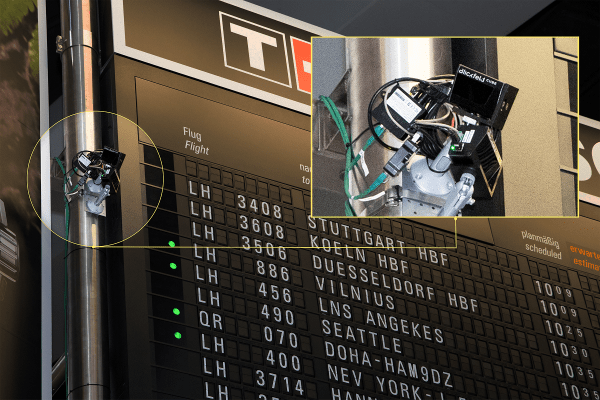
Learn how Fraport uses Blickfeld LiDAR solutions to detect passenger flows and shorten waiting times at Frankfurt airport.
Calculating the number of people passing through a particular zone could be vital for improving operations and optimizing the utilization of resources. For example, in the use case below, LiDAR sensors can be installed at the entry point of a supermarket to create a 3D vision of the surroundings and capture data points of the entire field of view.
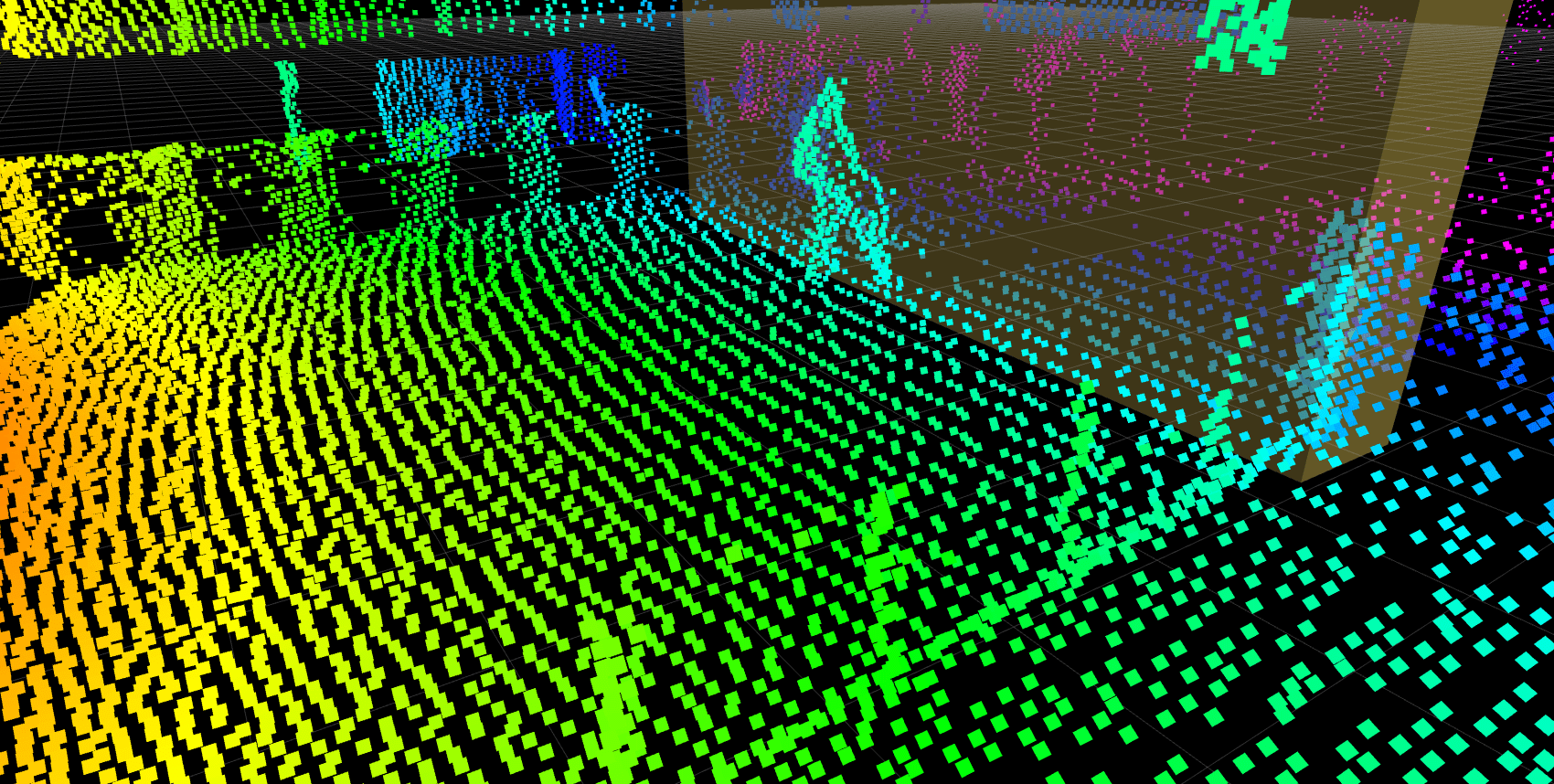
A zone could be created to count the total number of people visiting the store. This automated tracking would, for instance, help in precisely calculating the staff requirements during different operational periods, and help in cutting down operational costs. However, the data feed generated would also contain many static objects such as doors, counters, grocery shelves, etc. Using the background subtraction algorithm, only data containing the person and the zone would be transferred over the connection, dramatically cutting down the load on wireless LiDAR networks.
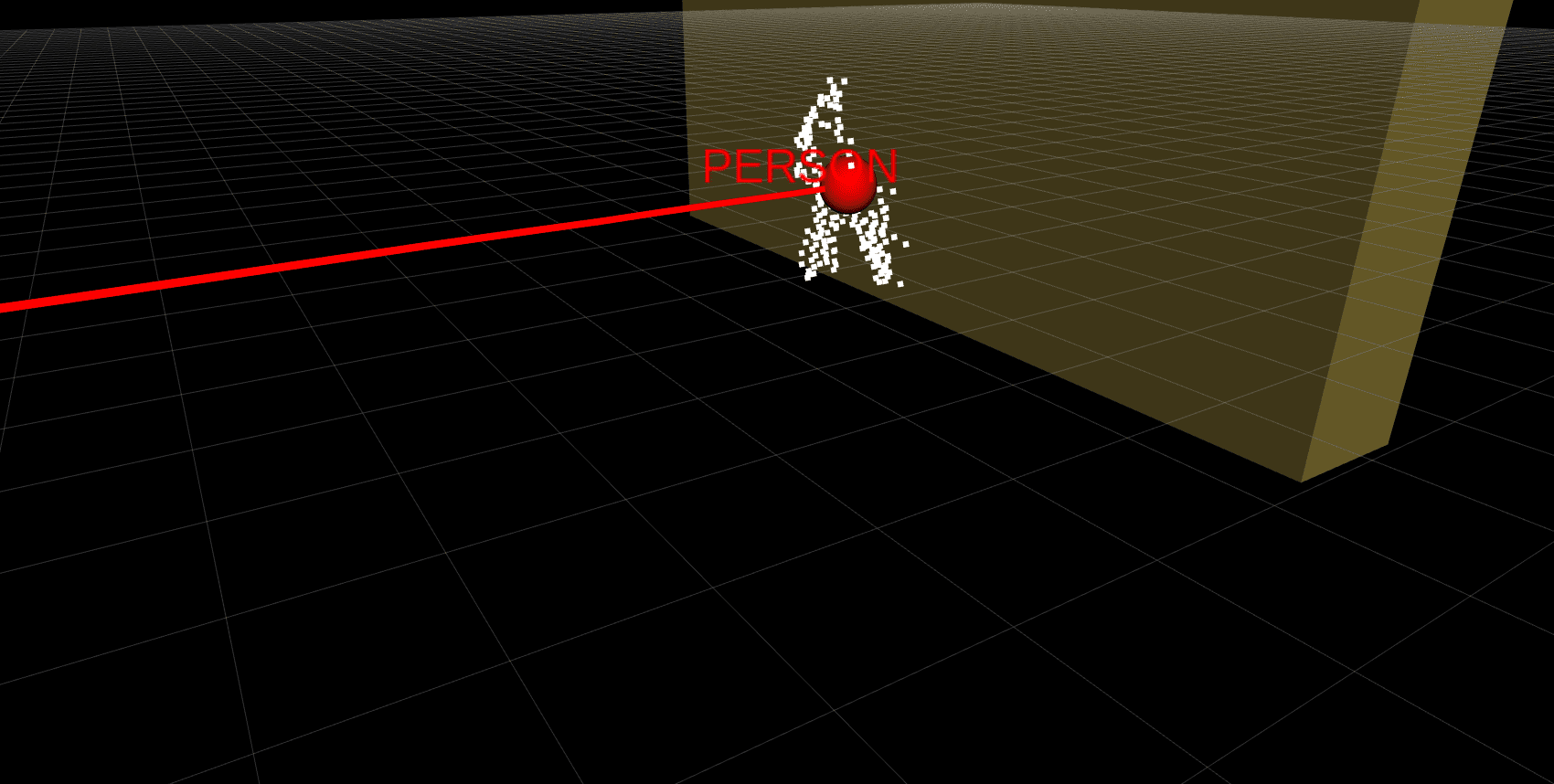
To be precise, in this case, the total amount of data before background subtraction was ~3 MB/s per sensor, which was reduced to ~0.2 MB/s per sensor. Further pre-processing through clustering of the points from the foreground generates actionable insights, and the point cloud is identified as a person with the data stream reduced to ~0.01 MB/s per sensor, leading to a nearly 99% of reduction in the total data to be transferred.
On-Device Motion Detection for Traffic Surveillance
LiDAR-based traffic monitoring systems are very promising since they provide real-time and anonymized 3D data. This implies that while the system can, for example, differentiate between a pedestrian or a cyclist in mixed traffic situations, identifying the individuals is not possible, thus protecting the privacy of road users. More nuanced applications, such as obtaining different roadway users’ movement data and other metrics such as average speed per lane, vehicle count per lane, vehicle dwell time, people count, and average speed of the pedestrians can all be calculated using LiDARs for traffic surveillance systems. But traffic surveillance also generates vast amounts of data at every instant, meaning there is a pressing need for smart solutions to reduce the computational effort — and especially the load on LTE/5G networks.
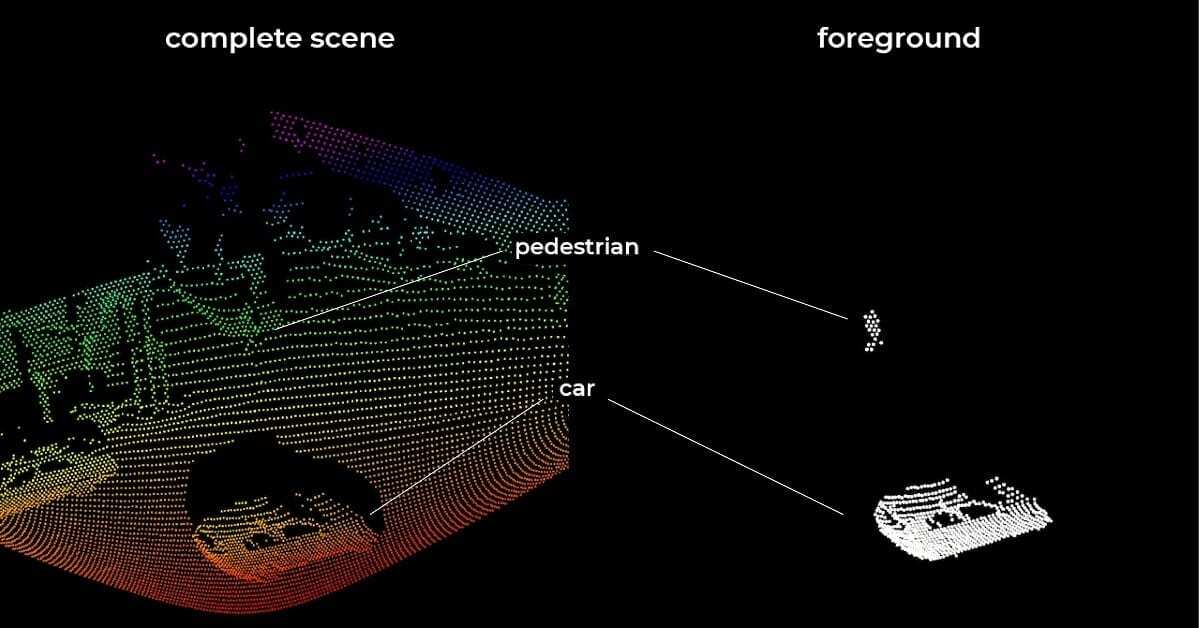
Let’s analyze a typical traffic junction monitored using our LiDARs. A point cloud would consist of not only the vehicles and pedestrians approaching an intersection, but also static objects in and around the scene, such as the pavements, roads, and buildings, as seen in the “complete scene”.
But the LiDAR’s on-device data analysis capabilities would identify and remove the static objects from the background, resulting in only the foreground dynamic objects such as the pedestrian and the moving car, labeled as the “foreground”.
This step can significantly reduce the amount of data to be processed and thus improve the accuracy and speed of object identification while reducing the load on wireless LiDAR applications over LTE or 5G networks.
Smart LiDAR Technology Moving Forward
LiDARs are emerging as one of the most promising sensor-based technologies, shaping the future of smart applications with precise spatial awareness. Blickfeld’s smart LiDARs take this a step further, enabling fast and simplified extraction of actionable insights from point clouds through on-device pre-processing algorithms. These on-device capabilities have already proven their value in numerous projects.
Beyond reducing data for transmission over 5G, on-device processing adds significant value across a wide range of applications. It supports features such as security zones, exclusion zones, volume zones, occupancy zones, and traffic zones, as well as object detection, tracking, and classification of objects by size—small, medium, or large. By handling complex interpretation directly on the sensor, Blickfeld smart LiDARs make operations faster, more efficient, and more accessible, delivering actionable insights across security, traffic, and industrial environments.
Looking ahead, further expansion of on-device algorithms and analytic capabilities will open up even more opportunities for smart LiDAR applications, enabling increasingly sophisticated real-time monitoring, automation, and decision-making across industries.

